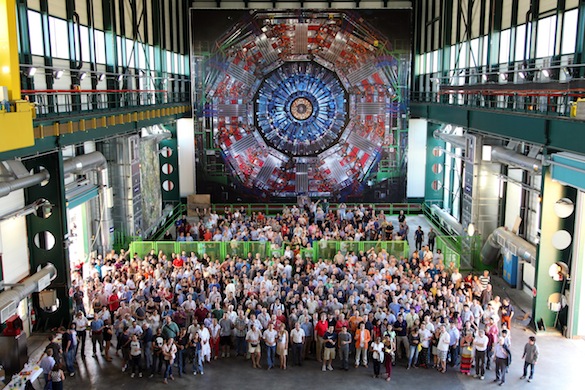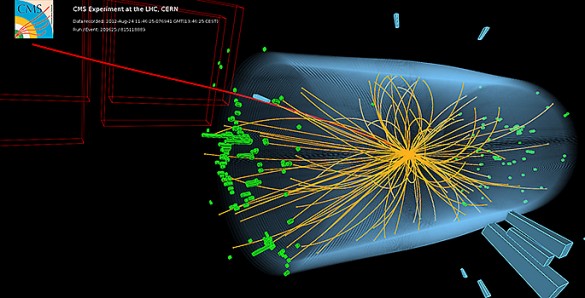
Remember the Higgs particle?
That is the mysterious particle physicists invoke to explain the phenomenon of mass, which researchers working at Large Hadron Collider (LHC) in Switzerland finally discovered in 2012 after decades of searching.
When the LHC produced the first evidence that the particle exists, physicists really didn’t know much about it, other than that its existence was required by the Standard Model, which is the current theory of how the sub-atomic world works.

This week one of the LHC teams – the CMS collaboration – published the results of further studies of the particle in the journal Nature Physics that provide significant new support for the idea that the particle is the source of mass and it appears to behave in a manner consistent with the predictions of the Standard Model.
Vanderbilt’s high energy physics group – Professor Paul Sheldon, Associate Professor Will Johns, Research Assistant Professor Alfredo Gurrola and graduate students Andrés Delannoy and Andrew Melo – are members of the CMS collaboration and played a leading role in the new findings. (The CMS collaboration as a whole consists of 2,680 physicists and 1,140 engineers and technicians from 182 different institutions).
The Standard Model divides fundamental particles into two types: force-carrying particles called bosons (photons that carry light and gravitons that carry gravity) and particles called fermions (quarks and gluons) that are the building blocks of matter.
The Higgs particle is a boson. The reason it is so important is because physicists have proposed that it produces an invisible field that pervades all of space and exerts a force on fermions (and the protons, neutrons and electrons constructed from them) that gives them mass. Without mass, the universe would be nothing more than a bunch of particles zipping around at the speed of light. Atoms and molecules wouldn’t form. Stars and planets wouldn’t form. Life wouldn’t exist.
The new observations have to do with the ways in which the newly discovered particle decays. Experiments at the LHC consist of colliding protons together at nearly the speed of light and then tracking the resulting micro-explosions that create hundreds of exotic subatomic particles. These particles typically have extremely short (nanosecond) lifetimes, after which they decay into different particles, called daughter particles, which also exist for an instant or two before decaying into other daughter particles and so on. The physicists identify these particles by their charge and mass and analyze these decay chains to identify the original particles.
The discovery reported in 2012 was based on the observation that the newly discovered particle decays into other bosons.
“[lquote]To really claim that the discovered particle is a Higgs boson, we had to show that it also decays into fermions,” said Gurrola.[/lquote] “For several decades, physicists have been claiming that the Higgs boson and the Higgs mechanism are responsible for giving mass to all particles. However, without observation of the fermion mode, physicists can only claim with confidence that the Higgs boson is responsible for giving mass to bosons.”
According to the Standard Model, the Higgs boson was most likely to decay into two fermions, bottom quarks and tau leptons, because they are the heaviest fermions into which a particle with Higgs’ mass can decay.
The Vanderbilt group decided to concentrate on searches involving the decay of the Higgs into a pair of tau leptons. This was a considerable challenge because the tau lepton is one of the most difficult particles for the CMS detector to identify. So the Vanderbilt researchers contributed to the development of advanced algorithms and techniques for finding the signatures of these illusive particles.

These methods were successful, allowing the CMS team to determine that the Higgs does indeed decay into pairs of tau leptons. A parallel analysis showed that it also decays into pairs of bottom quarks. These results, taken together, have significantly increased physicists’ confidence that they have indeed found the “God particle” that provides the mass that brings order to the universe.